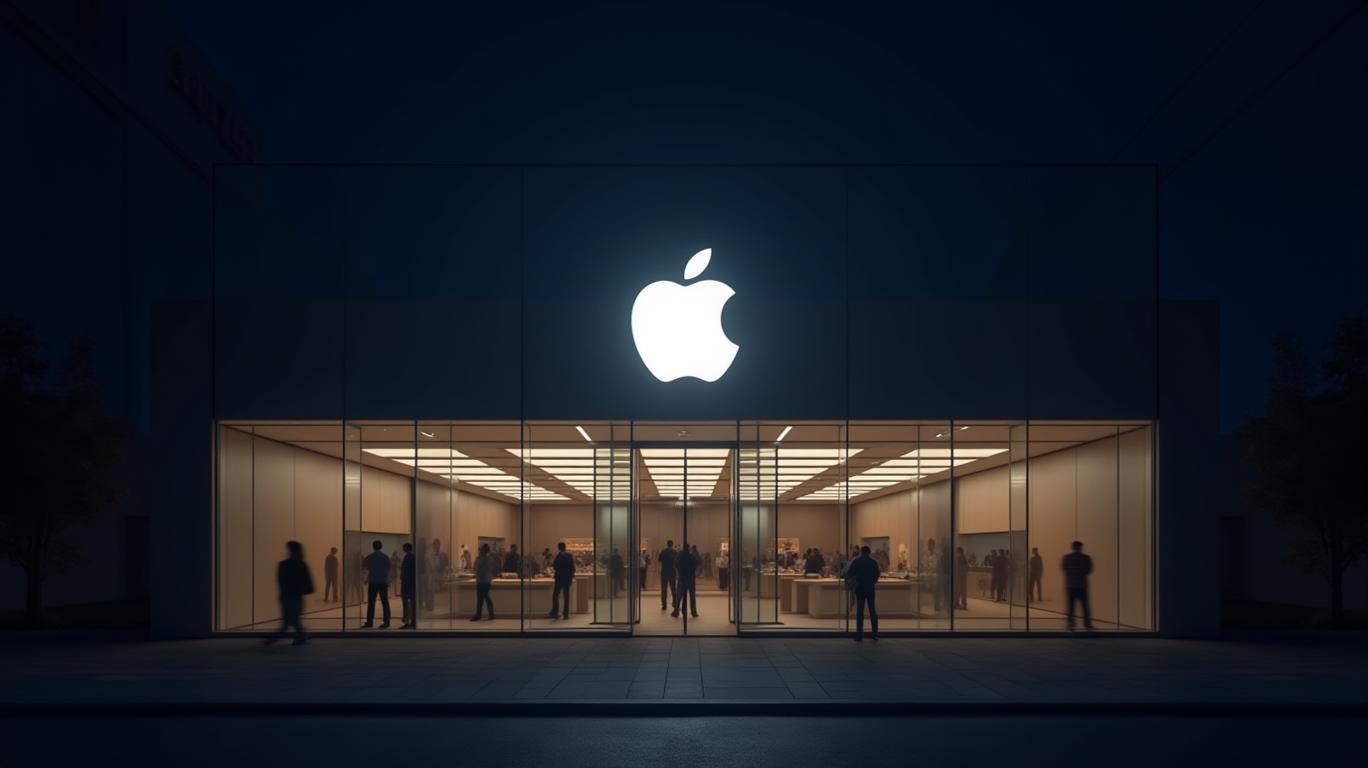Apple’s Innovation Pipeline: Can It Justify the Valuation?
Apple (AAPL) has long been the gold standard of tech innovation, but its stock’s recent volatility—down 14% year-to-date—hints at a growing disconnect between its valuation and its ability to sustain growth. While the company reported record Q1 2025 revenue of $124.3 billion, driven by services and emerging markets, investors are increasingly skeptical about its long-term trajectory. Slowing iPhone sales, delayed AI integration in key markets, and rising competition in services and AR markets are fueling this doubt. Let’s dissect the risks and why a cautious stance may be warranted until
delivers tangible innovation breakthroughs.
The Financials: Strength in Services, Stumbles in Hardware
Apple’s Q1 results were robust on paper, but cracks are visible. Services revenue hit a record $26.3 billion, up 14%, fueled by Apple TV+ and enterprise adoption. However, iPhone sales—still its cash cow—grew just 2% year-over-year, with Greater China’s revenue plummeting 11% amid inventory adjustments and the absence of Apple Intelligence. Meanwhile, the Vision Pro, Apple’s AR play, remains a niche product, lacking the mass-market appeal of its iPhone or iPad launches.
The stock’s recent decline mirrors investor anxiety about slowing iPhone upgrades and the company’s reliance on incremental improvements rather than transformative products.
Innovation Pipeline: Hype vs. Reality
Tim Cook’s vision for Apple’s future hinges on AI-driven features like Apple Intelligence and its expanding AR ecosystem. During the Q1 earnings call, Cook emphasized that the iPhone 16’s AI tools (e.g., Genmoji, Image Playground) drove record upgraders in regions where the feature was deployed. Yet, execution is lagging:
- AI Rollout Delays: Apple Intelligence, critical to iPhone’s competitive edge, remains absent in China due to regulatory hurdles. Competitors like Samsung and Google are already embedding similar AI tools into their devices globally.
- AR Market Challenges: The Vision Pro, priced at $3,499, struggles against cheaper VR headsets from Meta and others. Apple’s focus on enterprise use cases (e.g., spatial collaboration with Cisco) is a niche play in a market demanding mass adoption.
- Services Saturation: While services revenue grew 14%, its low-margin content offerings (e.g., Apple TV+) face rising competition from Netflix and Disney+. Enterprise sales are a bright spot, but they’re unlikely to offset iPhone’s stagnation.
Analyst Downgrades: A Vote of No Confidence
Analysts are growing impatient. Rosenblatt Securities recently downgraded Apple to “Neutral” from “Buy,” citing a lack of AI-driven iPhone growth and a $217 price target (down from $263). Jefferies cut its rating to “Underperform,” warning of tariff-induced price hikes and demand risks in key markets. Even bulls are hedging: Morgan Stanley’s $235 target acknowledges near-term risks, while Barclays slashed its forecast for iPhone shipments in 2025.
The data tells a clear story: iPhone sales are maturing, and Apple’s innovation pipeline isn’t yet firing on all cylinders to replace that growth.
Why Investors Should Wait
The stakes are high. Apple’s $2.8 trillion valuation assumes continued dominance in smartphones, services, and emerging tech. Yet, three red flags demand caution:
- Geopolitical Risks: Tariffs on Chinese-manufactured goods could force Apple to raise prices in the U.S., hurting demand. Shifting production to India and Vietnam is underway, but execution risks remain.
- AI Adoption Uncertainty: While Apple’s privacy-first AI is a strength, its slow rollout in key markets (e.g., China) leaves gaps competitors are rushing to fill.
- AR’s Uncertain Future: The Vision Pro’s high price and limited use cases limit its mass-market potential. Without a breakthrough, AR could become a costly distraction.
The Bottom Line: Caution Until Innovation Materializes
Apple’s stock is caught in a tug-of-war between its unmatched ecosystem and the reality of slowing hardware cycles. While services and emerging markets provide a floor, investors deserve clarity on two questions: When will Apple deliver a next-gen product as transformative as the iPhone? and Can it sustain growth in an era of AI-driven competition?
Until then, the prudent move is to sit on the sidelines. A shows Apple’s premium is at risk if innovation stalls. Wait for signs of a breakthrough—whether in AR adoption, AI-powered hardware, or a new product category—before committing capital.
In tech, execution beats vision every time. For now, Apple’s pipeline remains a work in progress.
John Gapper is a pseudonym for a seasoned financial analyst specializing in technology and innovation trends.

Comments
No comments yet